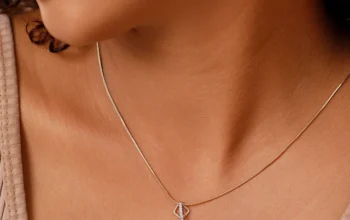Frog eyes piercing features a barbell that goes horizontally through the middle of the tongue, with decorative balls screwed onto each end. The most common placement has one ball resting behind the bottom teeth with the flashy gem end visible when sticking out the tongue.
Also called frog eyes or horizontal tongue piercings, this body mod creates a noticeable facial statement. Read on for what to expect with frog eyes piercing.
- Piercing Placement
The proper placement is essential for a frog eye piercing. It should go perfectly horizontal through the center of the tongue, from side to side. Improper angles or piercing too deep or shallow leads to migration and rejection risk.
Mark the desired entry and exit points before piercing to ensure proper alignment. Piercers usually recommend placing the horizontal barbell about 1 inch from the tongue tip for best results. Deeper than that, it risks hitting veins.
Allow 1/4 inch length on each end of the barbell shaft to accommodate for swelling. Excessive initial barbell length helps minimize early compression complications. As swelling subsides, downsize the barbell for comfort.
- Piercing Procedure
Getting a frog eye piercing follows typical tongue piercing protocol. The piercer will use a tongue clamp to stabilize the tongue throughout the procedure. You’ll get a choice of barbells and gem ends.
The tongue is marked and pierced from side to side quickly. Ball ends are screwed into place with the glamorous gem end positioned to show when sticking out the tongue.
The process takes only seconds. There may be a pinch and pressure sensation at the entry and exit points. Proper breathing helps you stay calm. The tongue may bleed slightly. Initial pain subsides quickly.

- Pain And Discomfort
Frog eye tongue piercings are among the least painful tongue piercings. Because the tongue has limited nerve endings in the middle, pain tends to be minimal. The sides of the tongue are more sensitive.
There will be pressure and pinching during the piercing process. Afterward, the tongue may feel swollen, tender, and slightly sore for the first several days. Discomfort is usually mild and manageable without medication.
Placement, jewelry size, and proper aftercare impact pain levels. Keeping the new piercing clean and avoiding irritation minimizes swelling. Any significant pain or ongoing discomfort indicates potential problems.
- Initial Barbells And Jewelry
Initial frog eye barbells are straight with simple screw-on balls for both ends. One end holds a basic ball; the visible end showcases your choice of a glamorous gem.
The initial jewelry gauge will depend on anatomy. Opt for rounded balls over pointed tips for comfort, especially on the bottom side resting under teeth.
Save expensive gemmed ends for once the piercing has stabilized. Low-quality metals provoke reactions.
- Aftercare Guidelines
Proper aftercare is crucial during the tongue-piercing healing period. Follow your piercer’s instructions diligently to allow adequate healing and prevent complications.
Rinse mouth with antibacterial rinse following meals and snacks for the first two weeks. Avoid alcohol mouthwash, which dries tissues. Brush teeth gently around the piercing.
Eat a soft foods diet initially. Rinse with water after eating or drinking anything besides water. Don’t play with the jewelry, and avoid potential irritants during the first month.

- Healing Timeframe
Tongue piercings heal faster than most oral piercings if you follow aftercare. Initial swelling subsides within the first week. Functional healing occurs within 4-6 weeks.
Full maturation of the piercing tract is completed in approximately 3-4 months. During this time, you’ll downsize the barbell length in stages as swelling resolves until it fits comfortably.
Refrain from kissing, new partners, or oral contact before 2-4 months. Patience allows proper healing to avoid risks like infection. Your piercer can advise timing.
- Rejection Risk Factors
Rejection risk is present with oral piercings, but fortunately, rejection is uncommon with frog eyes when done correctly. Avoiding irritation minimizes the rejection likelihood.
Poor placement or angles, inappropriate jewelry size, quality or shape, alcohol use, smoking, oral contact, playing with the piercing, and infection provoke rejections.
Catching the jewelry between teeth or extensive swelling and raising pressure on the ends can also cause the piercing to migrate or reject. Heed warning signs like increasing redness or swelling.




